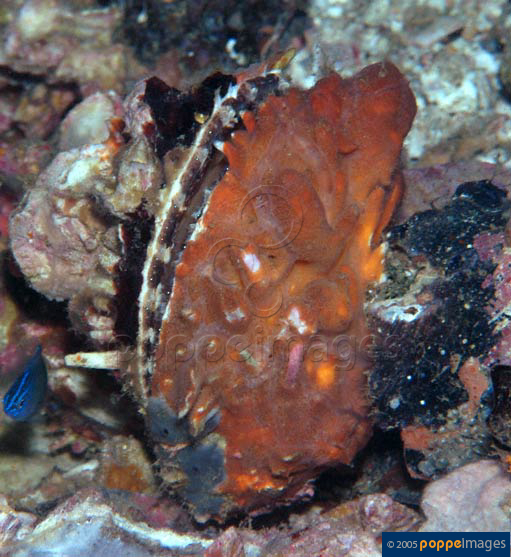| Pinnidae (pen shells) |
| 48 cm SHL (male/unsexed) |
|
benthic; marine; depth range 0 - 50 m |
| Indo-Pacific: from East Africa, including Madagascar, the Red Sea and the Persian Gulf, to eastern Polynesia; north to Japan and Hawaii, and south to Queensland and New Caledonia. |
|
Shell reaching a very large size, thick and solid, inflated, variable in shape from triangular to hatchet-shaped or subglobular. Dorsal margin usually nearly straight, posterior margin broadly oval to somewhat truncate in outline. Ventral margin broadly convex posteriorly and concave near the umbones, often strongly lobate in medium-sized and large specimens. Outside of valves with 10 to 17 main radial ribs, often bearing scale-like spines, and with weaker interstitial riblets. Internal nacreous layer moderately strong, undivided, occupying the anterior half or 2/3 of valves. Hind margin of posterior adductor scar slightly protruding beyond the nacreous area (protrusion of adductor scar more developed in mature specimens). Colour: outside of shell dark reddish brown to nearly black, usually dull. Shell material semitranslucent, appearing a rich reddish purple when viewed with transmitted light. Interior dark brown to black, iridescent on nacreous area. |
| Because it attains a large size, this common species is probably one of the most economically important members of the family in the Indo-West Pacific. Beautiful but fragile black pearls are sometimes produced by the animal (Ref. 348). Intertidal to subtidal, on sand and mud (Ref. 75840). |
|
Not Evaluated (N.E.) Ref. 123251)
|
| harmless |
|
Source and more info: www.sealifebase.org. For personal, classroom, and other internal use only. Not for publication.

